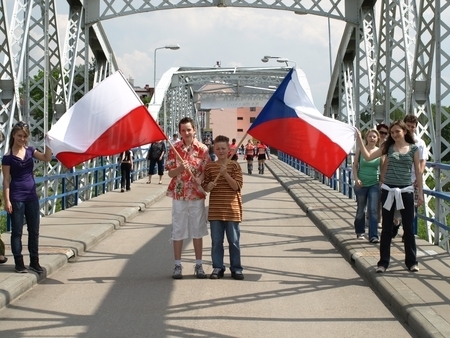Euroregion Silesia - CZ
Adresa sídla: Horní náměstí 382/69, 746 01 Opava, Česká republika
Adresa sekretariátu:


In the last century, at the beginning of the 90's, the terms of "Euroregion" and "cross-border cooperation" were unknown, unsubstantial, and uninteresting for the majority of Czechs, Poles, Hungarians and other inhabitants of Central and Eastern European countries. Hermetically closed frontiers made no cross-border contact available; people did not know localities and neighbours on the other side of the border. These borders, created over the course of the last three centuries and reinforced after WW II, formed impassable barriers between the regions belonging historically to one another and let them become marginal and not very attractive regions for living. The desire of the border area inhabitants to live the life of the same quality as people living inland has led the municipalities to look for new possibilities for cross-border cooperation and to resolve specific problems in the border areas. In a manner similar to Western Europe, regional groupings getting in touch with similar association at the other side of the border have been established. It was a beginning of first Euroregions which have thus connected neighbouring countries in Central and Eastern Europe like "bridges across borders" and become the propelling force of cross-border cooperation.

Rafaela Juraszek, Joanna Chrobok, Łukasz Chrobok and Andrzej Kupiec
Photo by Grzegorz Wawoczny
It was the same in the historic area of Silesia stretching in the north-east of the Czech Republic and south-west of Poland. The municipalities in the area were predestined to a mutual cooperation by unified historic development. No sooner had a border divided the united entity than Maria Theresa of Austria was defeated in a war with Frederick II of Prussia in 1742 and lost most of Silesia. The larger part of Silesia was annexed by Prussia and the smaller part in the territory of Bohemian Crown Lands remained part of Austrian Empire ruled by Habsburg dynasty. The end of WW II had no impact on reunification of the region - Upper Silesia became a part of Poland and Czech Silesia became a part of Czechoslovakia.
The development of people's contact on either side of the border was not even supported by both the countries' membership of Eastern Bloc countries. A real Czech-Polish cooperation within this area has been developing since 1989 in the context of democratic changes in both the countries. At the beginning it was understood as an individual partnership of individual villages and towns, gradually it has assumed a regional importance that culminated in establishing of the Euroregion named after the area where its larger part is located.
What is the "Euroregion Silesia"? When did it come into existence? What is its task? And what about its future? You can find answers to these and further questions at the following website.